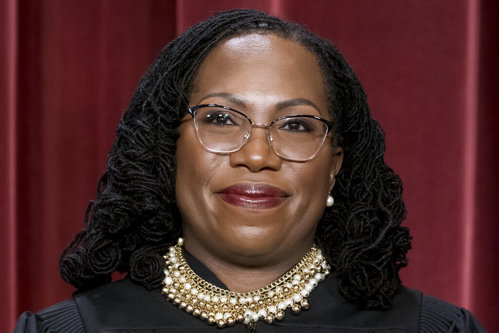In the case Ames v. Ohio Dept. of Youth Services, all nine justices sided with a state government employee named Marlene Ames and her allegation of illegal job discrimination. Despite 15 years of experience, and a college degree, she was passed over for a promotion so a less-qualified employee could get the job instead.
Not only did Ames, who is straight and white, lose the job promotion to a black lesbian, she was even demoted to a lesser office position by her boss, who is also a lesbian.
 Dr. Richard Land, president emeritus at Southern Evangelical Seminary, has been following the Ames case. He tells AFN what stood out to him was the majority opinion written by one of the court’s liberal justices, Ketanji Brown Jackson.
Dr. Richard Land, president emeritus at Southern Evangelical Seminary, has been following the Ames case. He tells AFN what stood out to him was the majority opinion written by one of the court’s liberal justices, Ketanji Brown Jackson.
“When you have a 9-0 decision and the opinion is written by an African-American, who is probably the most liberal member of the court, concurred by [Clarence] Thomas, who may be the most conservative member of this court, who's also black,” Land reasons, “you have made a major step in retiring reverse discrimination.”
In a related article he wrote for The Christian Post, Land points out Brown Jackson and the other justices wrestled with a controversial legal concept known as the McDonnell-Douglas framework. That legal theory, from a 1973 discrimination case, makes it difficult for a “majority” plaintiff – meaning white, male, and straight – to bring a discrimination case since the plaintiff is not historically the victim of discrimination.
In the case before them, where Ames was clearly the victim of discrimination, the nine justices tossed aside McDonnell Douglas as a unconstitutional framework.
In her opinion, Justice Jackson wrote: “By establishing the same protections for every ‘individual’—without regard to that individual’s membership in a minority or majority group—Congress left no room for courts to impose special requirements on majority group plaintiffs alone.”
Despite its stated goal of eliminating discrimination, Land says reverse discrimination has been very divisive and counterproductive when applied to the work place.

“Not only did it make people who weren't racist be tempted to be racist if they got passed over,” he observes, “but the greatest argument in defense against discrimination is performance.”
In the Ames ruling, Land says the high court finally agreed with an argument from Chief Justice John Roberts from a 2007 case. “The way to stop discrimination on the basis of race,” Roberts wrote at the time, “is to stop discriminating on the basis of race.”







